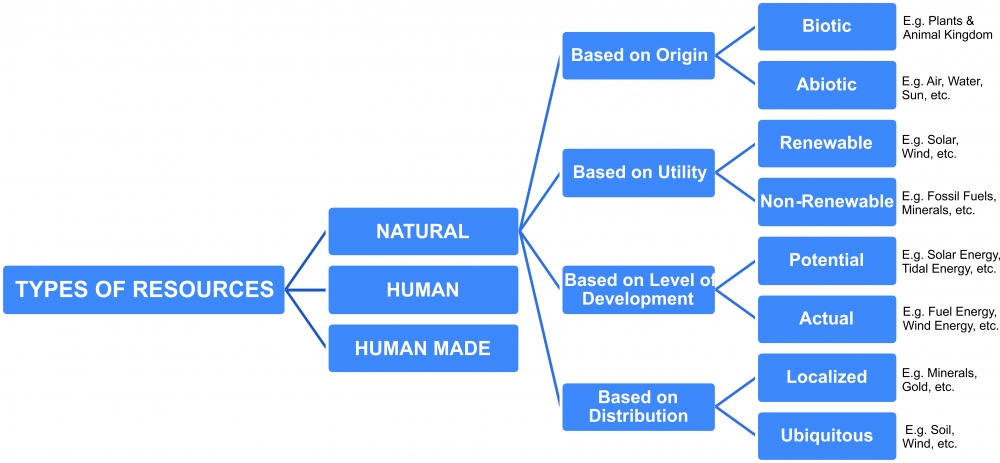Class VIII: Chapter 1 (Resource) Multiple Choice Questions:
Q1. Resources that we find in nature and are used without much modification are called ..................
(a) Human Resource
(b) Natural Resource
(c) Renewable Resource
(d) Human Made Resource
Q2. Natural resource are classified into various types on the basis of: (select the incorrect one)
(a) Distribution
(b) Development
(c) Origin
(d) Destruction
Q3. All non-living things are known as ..................
(a) Biotic Resource
(b) Exhaustible Resource
(c) Abiotic Resource
(d) Human Resource
Q4. Anything that can be used to satisfy human needs is a ..................
(a) Thing
(b) Value
(c) Resource
(d) Utility
Q5. Resources which can be renewed or reproduced are known as ..................
(a) Exhaustible Resource
(b) Renewable Resource
(c) Non-Renewable Resource
(d) Useful Resource
Q6. .................. Resources refer to the number and ability of the people. E.g. knowledge, skill, etc.
(a) Biotic Resource
(b) Human Made Resource
(c) Human Resource
(d) Abiotic Resource
Q7. A thing becomes a resource when it's .................. has been identified.
(a) Character
(b) Area
(c) Utility
(d) Availability
Q8. Balancing the need to use resources and also conserve them for the future is called ..................
(a) Sustainable Development
(b) Resource Conservation
(c) Resource Development
(d) Sustainable Conservation
Q9. Which one of the following is not a "Value"?
(a) Aesthetic Value
(b) Economic Value
(c) Artistic Value
(d) Ethical Value
Q10. Resources are generally classified into:
(a) 2 Types
(b) 3 Types
(c) 4 Types
(d) 5 Types
Q11. People use natural resources to make buildings, bridges, roads, machinery and vehicles, which are known as ..................
(a) Human Made Resource
(b) Human Resource
(c) Natural Resource
(d) Un-Natural Resource
Q12. Different ways to conserve natural resources are: (select the incorrect one)
(a) Preventing wastage
(b) Save Water
(c) Deforestation
(d) Aforestation
Q13. Value means ..................
(a) Utility
(b) Worth
(c) Money
(d) Wealth
Q14. .................. resources are found in a region but have not been utilized, might be because of the lack of technology.
(a) Potential Resource
(b) Localized Resource
(c) Actual Resource
(d) Ubiquitous Resource
Q15. Resources created by human beings are called ..................
(a) Natural Resource
(b) Useful Resource
(c) Industrial Resource
(d) Man Made Resource
Q16. Some of the principles of Sustainable Development are: (select the incorrect one)
(a) Minimise the depletion of natural resources
(b) Respect and care for all forms of life
(c) Conserve the earth's vitality & diversity
(d) Government should only take care
Q17. Factors which help in the development of resources are:
(a) All (b, c & d)
(b) Human Resource
(c) Technology
(d) International Competition
Q18. Resources which are found everywhere are called ..................
(a) Biotic Resource
(b) Potential Resource
(c) Ubiquitous Resource
(d) Renewable Resource
Q19. Using resources carefully, judicially & giving them time to get renewed is called .................
(a) Resource Development
(b) Sustainable Conservation
(c) Sustainable Development
(d) Resource Conservation
Q20. We enjoy the beauty of mountains, waterfalls, sea, landscapes. Thus, they are resources which have ............. value.
(a) Ethical Value
(b) Artistic Value
(c) Aesthetic Value
(d) Economic Value
-----x-----X-----x-----







_0_o.jpg)

